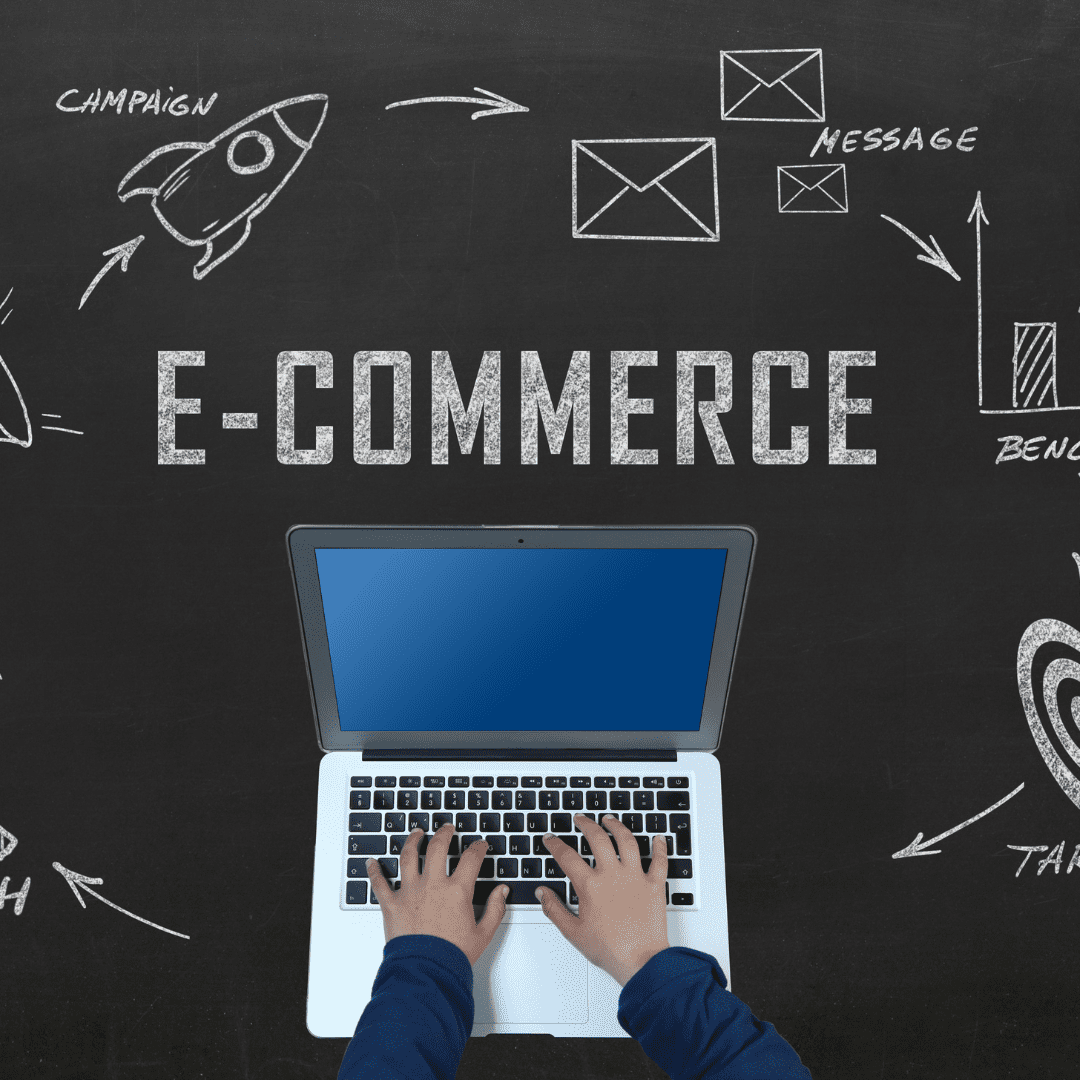Step-by-Step Guide to Starting Your E-Commerce Business
E-commerce has revolutionized the way businesses operate, offering unparalleled opportunities for entrepreneurs to reach global markets from the comfort of their own homes. In this comprehensive guide, we’ll walk you through the entire process of starting and running a successful e-commerce business, from selecting your niche to scaling your operations.
1. Introduction to E-Commerce Business
What is E-Commerce? E-commerce, or electronic commerce, refers to the buying and selling of goods and services over the internet. It encompasses a wide range of transactions, including online retail stores, digital downloads, and online auctions.
Why Start an E-Commerce Business? The benefits of starting an e-commerce business are numerous. It offers low startup costs, the ability to reach a global audience, flexibility in working hours, and scalability potential.
2. Choosing Your Niche – E-Commerce Business
Researching Market Demand Before diving into the world of e-commerce, it’s essential to research potential niches thoroughly. Look for products or services with high demand but low competition to increase your chances of success.
Passion vs. Profitability While it’s essential to choose a niche you’re passionate about, don’t overlook the importance of profitability. Balance your interests with market demand to find the perfect niche for your e-commerce business.
3. Selecting the Right E-Commerce Platform
Comparison of Popular Platforms There are numerous e-commerce platforms available, each with its own set of features and pricing. Popular options include Shopify, WooCommerce, Magento, and BigCommerce. Evaluate the features, pricing, and scalability of each platform before making a decision.
Factors to Consider When choosing an e-commerce platform, consider factors such as ease of use, customization options, payment gateway integration, and scalability. Select a platform that aligns with your business goals and technical expertise.
4. Setting Up Your Online Store – E-Commerce Business
Registering a Domain Name Choose a memorable and relevant domain name for your online store. Ensure that it reflects your brand identity and is easy for customers to remember and type.
Designing Your Website Design plays a crucial role in the success of your e-commerce website. Opt for a clean and user-friendly design that highlights your products and makes the shopping experience seamless for customers.
Adding Products and Content Upload high-quality images and detailed product descriptions to showcase your offerings effectively. Create compelling content that engages and informs your target audience, driving them to make a purchase.
5. Payment Gateway Integration – E-Commerce Business
Importance of Secure Payment Processing Secure payment processing is essential for building trust with your customers and protecting their sensitive information. Choose a payment gateway that offers robust security features and supports multiple payment methods.
Choosing a Payment Gateway Evaluate different payment gateways based on factors such as transaction fees, payment methods supported, and integration with your e-commerce platform. Popular options include PayPal, Stripe, and Authorize.Net.
6. Managing Inventory and Logistics – E-Commerce Business
Inventory Management Systems Implement an inventory management system to keep track of your stock levels, streamline reordering processes, and prevent stockouts or overstocking. Choose a system that integrates seamlessly with your e-commerce platform and offers real-time updates.
Shipping and Fulfillment Strategies Develop efficient shipping and fulfillment strategies to ensure timely delivery of orders to your customers. Partner with reliable shipping carriers and consider offering expedited shipping options to enhance the customer experience.
7. Digital Marketing Strategies
Search Engine Optimization (SEO) Optimize your website for search engines to improve your visibility and attract organic traffic. Focus on keyword research, on-page optimization, and link building to rank higher in search engine results pages (SERPs).
Social Media Marketing Harness the power of social media platforms to connect with your target audience, build brand awareness, and drive traffic to your website. Create engaging content, run targeted advertising campaigns, and interact with your followers to foster a loyal community.
Email Marketing Build an email list of subscribers and send out regular newsletters and promotional offers to keep them engaged and encourage repeat purchases. Personalize your emails based on customer preferences and behaviors to increase open and click-through rates.
8. Customer Service and Support
Building Trust and Loyalty Provide exceptional customer service to build trust and loyalty with your customers. Respond promptly to inquiries and resolve issues efficiently to leave a positive impression and encourage repeat business.
Handling Returns and Refunds Establish clear policies for returns and refunds to instill confidence in your customers and mitigate disputes. Make the process seamless and hassle-free to encourage customers to shop with confidence.
9. Legal and Regulatory Compliance
Privacy Policies and Data Protection Ensure compliance with data protection regulations such as the General Data Protection Regulation (GDPR) to protect customer data and avoid potential legal issues. Clearly communicate your privacy policies and obtain consent before collecting any personal information.
Taxation and Business Licensing Understand the tax implications of running an e-commerce business, including sales tax, income tax, and international taxes. Obtain the necessary business licenses and permits to operate legally in your jurisdiction.
10. Scaling Your E-Commerce Business
Analyzing Performance Metrics Monitor key performance indicators (KPIs) such as sales revenue, conversion rate, and customer acquisition cost to track the success of your e-commerce business. Use this data to identify areas for improvement and optimize your strategies accordingly.
Expanding Product Lines or Markets Explore opportunities for growth by expanding your product lines or entering new markets. Conduct market research to identify emerging trends and customer preferences, and adapt your offerings accordingly.
11. Case Studies and Success Stories
Real-Life Examples of E-Commerce Businesses Explore case studies and success stories of e-commerce entrepreneurs who have achieved significant growth and success in their respective industries. Learn from their experiences and apply their strategies to your own business.
12. Common Challenges and Solutions
Dealing with Competition E-commerce is a competitive industry, and you’ll likely encounter challenges such as price competition and saturation in your niche. Differentiate your brand by offering unique products, exceptional customer service, and a memorable shopping experience.
Adapting to Market Changes Stay agile and adaptable to changes in the e-commerce landscape, such as shifts in consumer behavior, technological advancements, and regulatory changes. Continuously innovate and evolve your strategies to stay ahead of the competition.
13. Future Trends in E-Commerce
Emerging Technologies Keep an eye on emerging technologies such as artificial intelligence (AI), augmented reality (AR), and voice commerce, which are shaping the future of e-commerce. Explore how these technologies can enhance the shopping experience for your customers and drive business growth.
Predictions for the Industry Stay informed about industry trends and predictions to anticipate future developments and stay ahead of the curve. Invest in technologies and strategies that align with the evolving needs and preferences of your target audience.
14. Conclusion
In conclusion, starting an e-commerce business can be a rewarding endeavor for aspiring entrepreneurs. By following this step-by-step guide and leveraging the power of digital marketing, you can create a successful online store that generates revenue and builds brand loyalty. Remember to stay adaptable, continuously innovate, and prioritize the needs of your customers to thrive in the competitive e-commerce landscape.
FAQs (Frequently Asked Questions)
- Q: What are some essential factors to consider when choosing an e-commerce platform?
- A: When choosing an e-commerce platform, consider factors such as ease of use, customization options, payment gateway integration, and scalability to ensure it aligns with your business goals.
- Q: How can I effectively market my e-commerce business?
- A: Utilize digital marketing strategies such as search engine optimization (SEO), social media marketing, and email marketing to reach your target audience and drive traffic to your website.
- Q: What are some common challenges faced by e-commerce entrepreneurs?
- A: Common challenges include competition, technological advancements, and regulatory changes. By staying agile and adaptable, you can overcome these challenges and thrive in the e-commerce industry.
- Q: How important is customer service in an e-commerce business?
- A: Customer service is crucial in building trust and loyalty with your customers. Providing exceptional support and addressing their needs promptly can lead to repeat business and positive word-of-mouth.
-
Q: What are some future trends in e-commerce?
- A: Emerging technologies such as artificial intelligence (AI), augmented reality (AR), and voice commerce are shaping the future of e-commerce. Stay informed about these trends to stay ahead of the competition.
Author Note:
This article, authored by Noor Siddiqui from etaxdial.com, is intended for informational purposes only. It is written with the aim of sharing knowledge and providing assistance to individuals interested in starting an e-commerce business. The goal is to support young entrepreneurs and newcomers to the e-commerce industry by offering valuable insights and guidance through a step-by-step guide. If you have any questions or need further assistance, please feel free to reach out.



